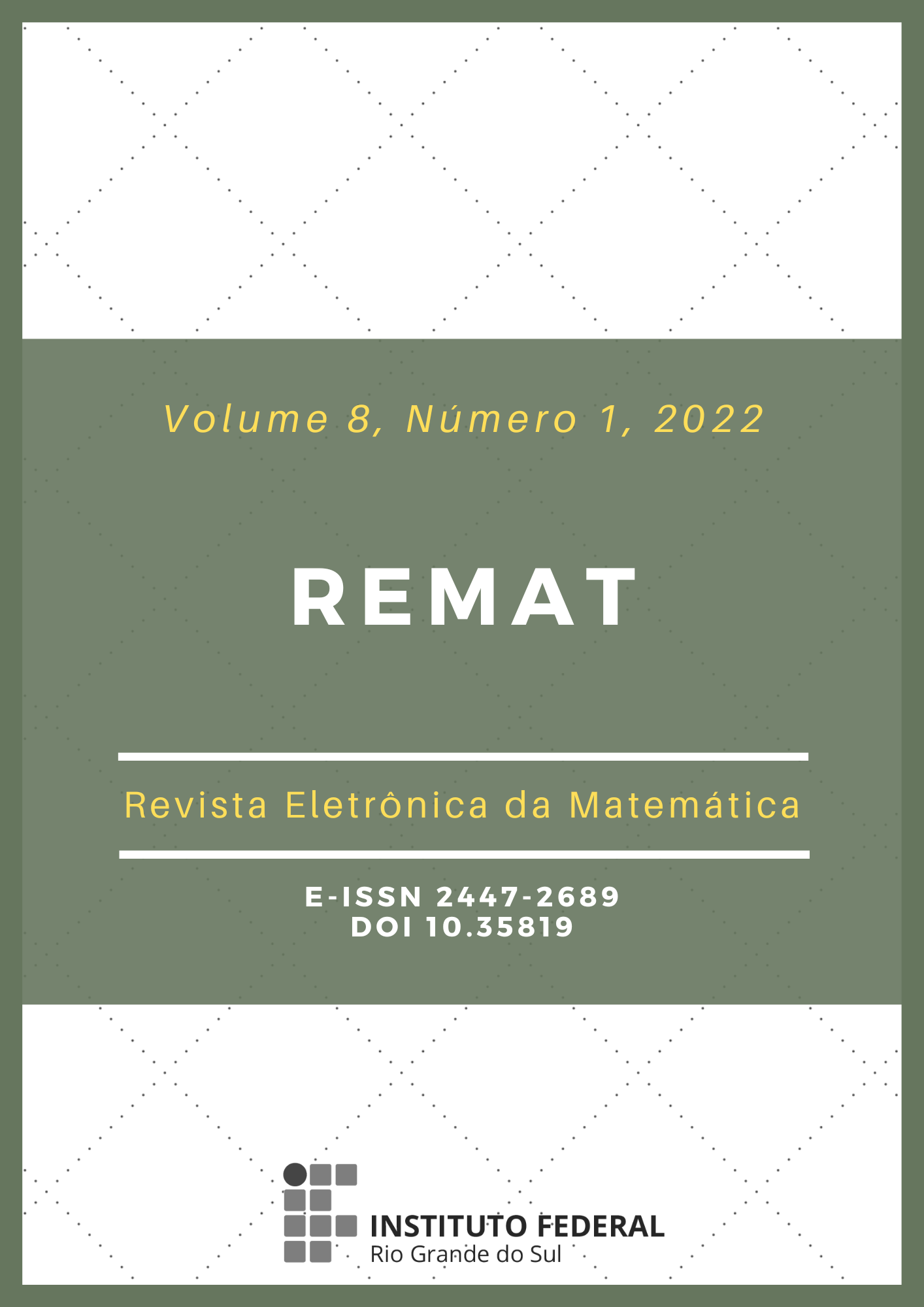Diophantine equations and optimal financial resources allocation of small investors on the Brazilian stock market
DOI:
https://doi.org/10.35819/remat2022v8i1id5674Keywords:
Stock Market, Elementary Number Theory, Financial Education, Linear Diophantine EquationsAbstract
The main result of this work is to propose a method of calculation for allocation of financial resources in an investment portfolio composed of shares of two companies listed on the stock exchange (B3). The main objective is the full use of available resources in order to optimize the process for small investors. For this purpose, the Elementary Theory of Numbers applies. In particular, the basic results of the linear Diophantine equations in two variables are helpful.
Downloads
References
B3 S.A. - Brasil, Bolsa, Balcão. Relatório sobre pessoa física - 1º Semestre de 2021. Disponível em: www.b3.com.br/pt_br/market-data-e-indices/servicos-de-dados/market-data/consultas/mercado-a-vista/perfil-pessoas-fisicas/perfil-pessoa-fisica. Acesso em: 31 mar. 2022.
BONANI, Breno. 3 Coisas Que Você Precisa Saber Sobre o Mercado Americano. Investing.com, 7 mar. 2020. Disponível em: https://br.investing.com/analysis/3-coisas-que-voce-precisa-saber-sobre-o-mercado-americano-200433893. Acesso em: 31 mar. 2022.
CAPINSKI, M.; ZASTAWNIAK, T. Mathematics for finance: an introduction to financial engineering. Londres: Springer, 2006.
HEFEZ, A. Aritmética. 1. ed. Rio de Janeiro: SBM, 2014.
SANTOS, J. P. O. Introdução à Teoria dos Números. Rio de Janeiro: SBM, 2020.
Downloads
Published
Issue
Section
License
Copyright (c) 2022 REMAT: Revista Eletrônica da Matemática

This work is licensed under a Creative Commons Attribution 4.0 International License.
REMAT retains the copyright of published articles, having the right to first publication of the work, mention of first publication in the journal in other published media and distribution of parts or of the work as a whole in order to promote the magazine.
This is an open access journal, which means that all content is available free of charge, at no cost to the user or his institution. Users are permitted to read, download, copy, distribute, print, search or link the full texts of the articles, or use them for any other legal purpose, without requesting prior permission from the magazine or the author. This statement is in accordance with the BOAI definition of open access.













 https://orcid.org/0000-0002-0893-7426
https://orcid.org/0000-0002-0893-7426


















